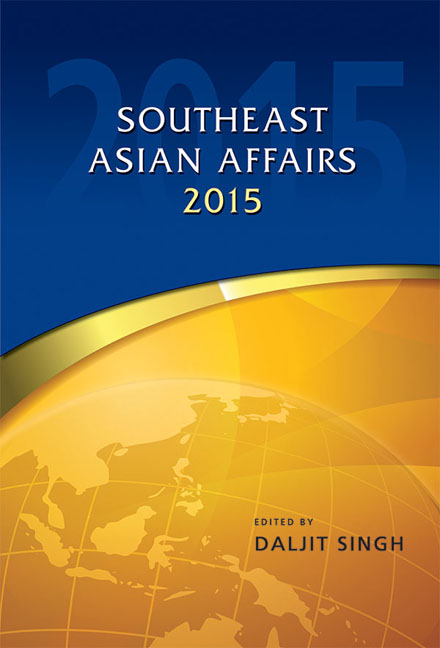Introduction
Published online by Cambridge University Press: 19 May 2017
Summary
Southeast Asia in 2014 presented a very mixed picture. The economies on the whole were more sluggish; political uncertainty in two key countries, Thailand and Malaysia, was higher; Islamic conservatism appeared to on the rise in Malaysia and Brunei; the Islamic State of Iraq and Syria (ISIS) was a growing security concern, especially in Indonesia and Malaysia; geopolitical trends, particularly China's quest for leadership, were causing unease; and questions were raised about whether ASEAN would be able to rise up to the challenges it faced. On the other hand, more engagement with major powers also presented economic opportunities, foreign direct investment in Southeast Asia was increasing, Indonesia saw a successful transfer of power in democratic elections to a reformist President, and Myanmar continued on the path of reform and democratization, even though the rise of Buddhist nationalism and its implications for community relations was a matter of concern.
This Introduction highlights some of the salient themes in this volume.
Economic Trends
At an estimated aggregate growth rate of 4.6 per cent, Southeast Asia's economic performance was below the 5 per cent average of 2013, marking the second consecutive year of slowdown since 2012, though Malaysia and Myanmar had higher growth than in 2013. The sluggish recoveries in the advanced industrial countries, the slowdown in China and declines in growth of domestic consumption and investment contributed to the more anaemic growth. Arief Ramayandi and Megananda Suryana, in their economic survey of the region in this volume, argue that since these factors will not improve anytime soon, the short-term growth prospects for the Southeast Asian economies were not rosy. They also point to the risks of financial market volatilities when the U.S. Federal Reserve raises interest rates later in 2015 as asset prices in some of the large economies were inflated.
On the other hand, lower commodity prices were on balance positive for Southeast Asian economies and inward foreign direct investment (FDI) to the five largest regional economies had been increasing steadily. But to ensure that this trend continued, Southeast Asian countries needed to maintain their level of economic competitiveness. Ramayandi and Suryana note that while in China rising wages were accompanied by healthy growth in labour productivity, in three major Southeast Asian countries — Indonesia, Malaysia and Thailand — wages have been outstripping productivity, thereby reducing labour productivity substantially.
- Type
- Chapter
- Information
- Southeast Asian Affairs 2015 , pp. ix - xxiPublisher: ISEAS–Yusof Ishak InstitutePrint publication year: 2015

